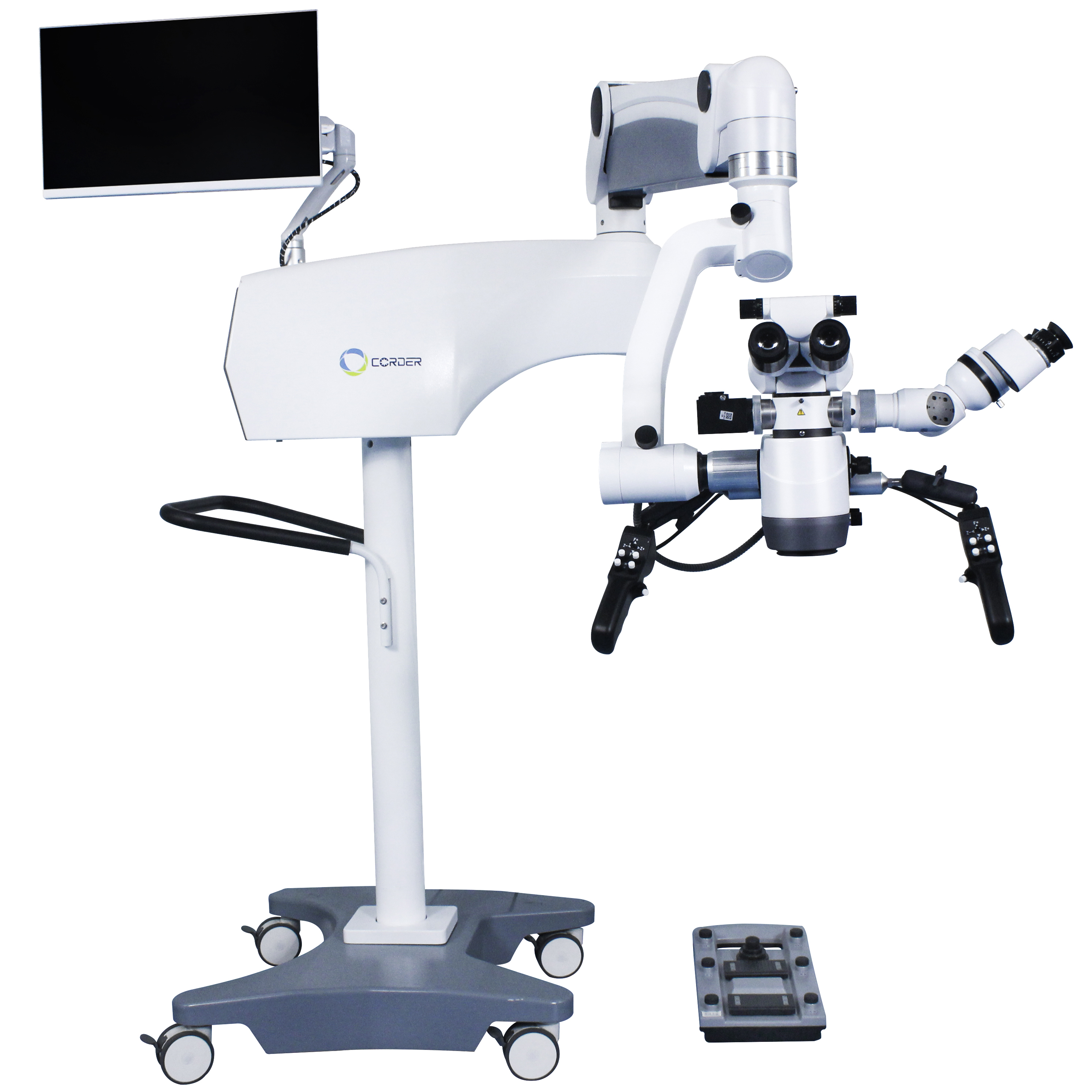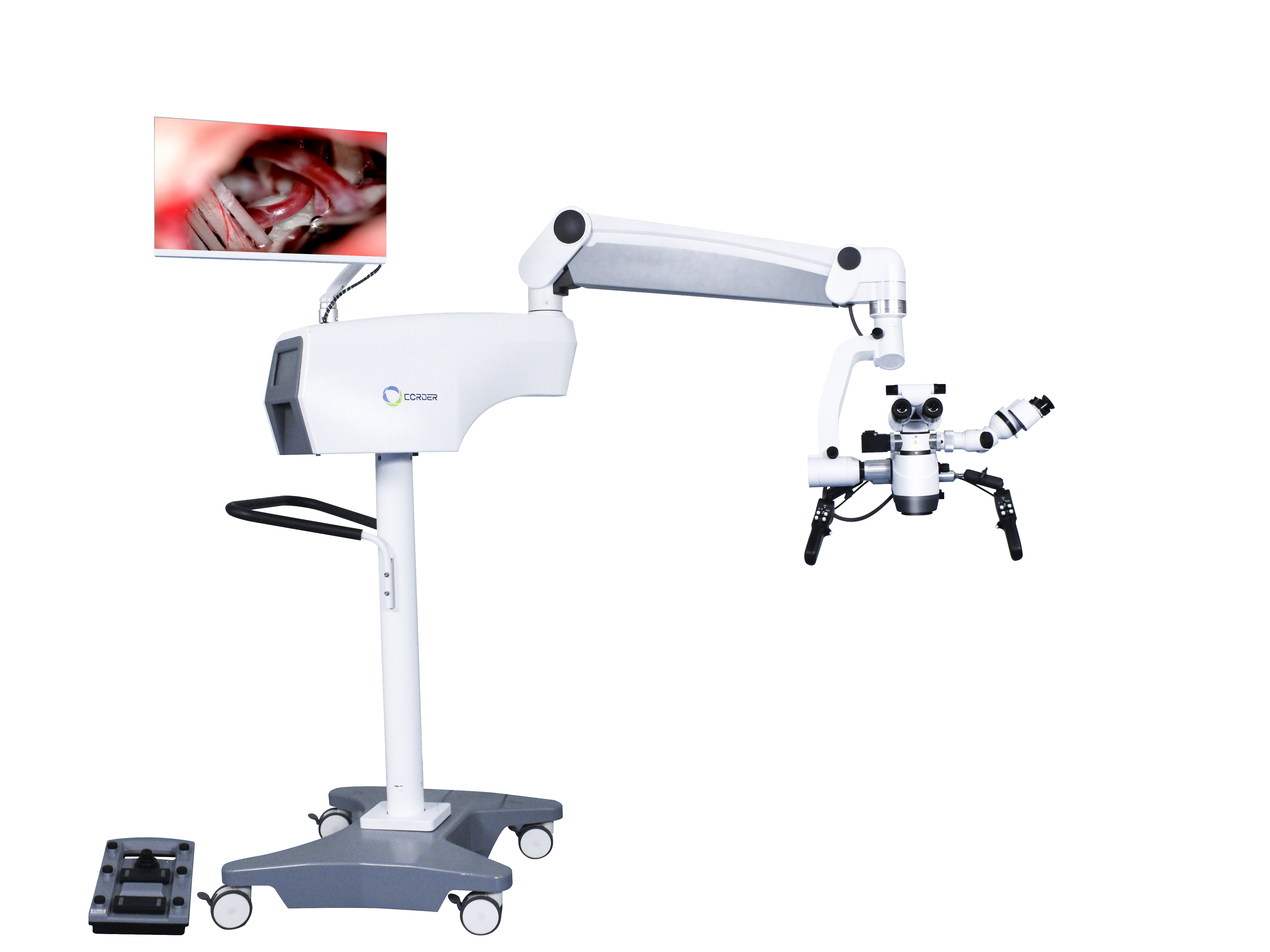手術用顕微鏡についてどれくらい知っていますか?
観測システム:観察システムは主に対物レンズ、ズームシステム、ビームスプリッター、鏡筒、接眼レンズなどから構成され、観察像の品質に影響を与える重要な要素です。医療用手術顕微鏡倍率、色収差補正、焦点深度(被写界深度)などが含まれます。
照明システム:照明システムは主に主照明、補助照明、光ケーブルなどで構成されており、これが映像品質に影響を与えるもう一つの重要な要素である。医療用手術顕微鏡.
ブラケットシステム:ブラケットシステムは、主にベース、柱、クロスアーム、水平XYムーバーなどで構成されています。ブラケットシステムは、手術用顕微鏡、観察・照明システムを必要な位置まで迅速かつ柔軟に移動できるようにする必要があります。
制御システム:制御システムは、主にコントロールパネル、コントロールハンドル、コントロールフットペダルで構成されています。コントロールパネルでは、手術中に操作モードを選択したり、画像を切り替えたりできるだけでなく、コントロールハンドルとコントロールフットペダルによって高精度な微小位置決めを実現し、顕微鏡の上下左右へのフォーカス、倍率の変更、照明の明るさ調整も制御できます。
表示システム:主にカメラ、コンバーター、光学構造、ディスプレイで構成されています。

の開発プロフェッショナル手術顕微鏡約100年の歴史があります。最も古い手術用顕微鏡拡大鏡の歴史は19世紀後半に遡ります。医師たちは手術でより鮮明な画像を得るために拡大鏡を使い始めました。20世紀初頭、耳鼻科医のカール・オロフ・ニーレンは中耳炎の手術に単眼顕微鏡を使用し、顕微手術.
1953年、ツァイスは世界初の商用手術用顕微鏡OPMI1はその後、眼科、脳神経外科、形成外科などの分野で応用されました。同時に、医学界は光学システムと機械システムの改良と革新を行いました。手術用顕微鏡.
1970年代後半、電磁スイッチが導入された後、手術用顕微鏡基本的に修正されました。
近年、高解像度手術用顕微鏡そしてデジタル技術、手術用顕微鏡既存の性能をベースに、光干渉断層撮影(OCT)、蛍光イメージング、拡張現実(AR)などの術中イメージングモジュールや高度なイメージング技術を導入し、医師により包括的な画像情報を提供しています。
その双眼手術顕微鏡両眼視力の差を利用して立体視を生成します。複数の報告において、脳神経外科医は、立体視効果の欠如を外部鏡の欠点の一つとして挙げています。一部の学者は、三次元立体視は手術を制限する主要な要因ではないと考えていますが、手術訓練や手術器具を用いて二次元手術視覚の時間的次元に移行することで、三次元空間認識の欠如を補うことができます。しかし、複雑な深部手術においては、二次元内視鏡システムは依然として従来のシステムの代わりにはなり得ません。手術用顕微鏡調査報告によると、最新の3D内視鏡システムでも、手術用顕微鏡手術中に脳深部の重要な領域で。
最新の3D内視鏡システムは優れた立体視力を提供しますが、従来の手術用顕微鏡3D内視鏡システムは、脳深部病変手術や出血時の組織認識において依然としてかけがえのない利点を持っている。OERTELとBURKHARDTは、3D内視鏡システムの臨床研究において、研究対象となった5件の脳手術と11件の脊椎手術のうち、3件の脳手術では3D内視鏡システムを放棄し、引き続き使用しなければならなかったことを明らかにした。手術用顕微鏡重要な段階で手術を完了させるのに苦労しました。これらの3つの症例において、3D内視鏡システムを用いて手術プロセス全体を完了できなかった要因は、照明、立体視、ステント調整、焦点合わせなど、多面的であると考えられます。しかし、脳深部における複雑な手術においては、手術用顕微鏡まだ一定の利点があります。

投稿日時: 2024年12月5日







